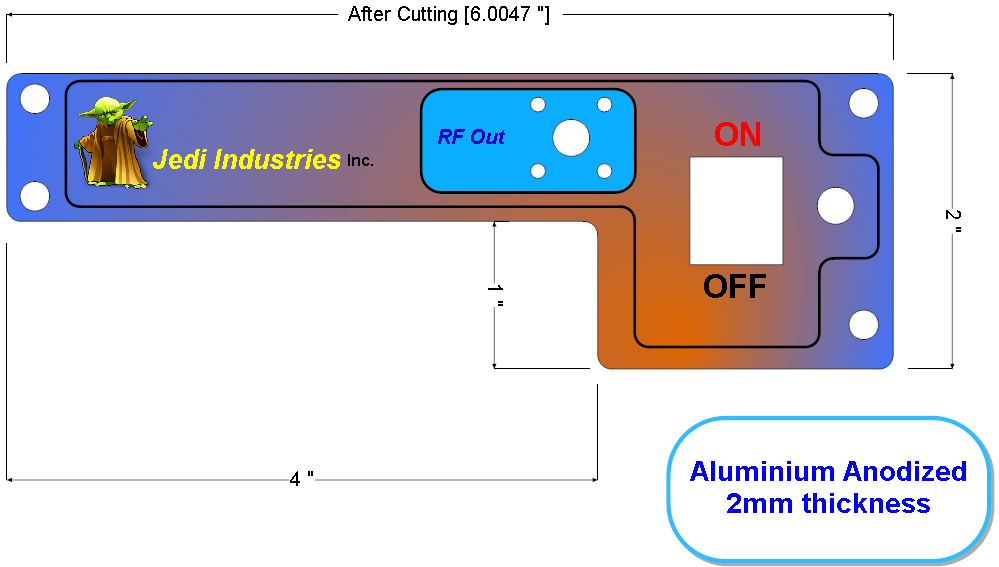Click Help→Samples→  to open the Front Panel sample project.
to open the Front Panel sample project.
With AutoTRAX DEX you can even design front panel displays. An example front panel display is shown below and was designed using the powerful graphics available in AutoTRAX DEX.
The front panel project contains this example front panel design.

The Front Panel Sample Project
Front Panels
Electronic front panels, often referred to as control panels or interfaces, serve as the interaction point between a user and a device. They include a variety of components that are crucial for operating electronic devices and can be found in various types of equipment, including audio systems, scientific instruments, industrial machinery, home appliances, and computer servers.
These front panels can contain elements such as:
•Display screens: These may be simple LED/LCD screens for showing basic status indicators, or more complex touch screens which provide detailed control and interaction.
•Buttons, switches, and knobs: These allow the user to perform actions like turning the device on/off, adjusting settings, or triggering specific functions.
•Ports and sockets: For plugging in external devices or accessories. These could be USB ports, headphone jacks, HDMI ports, or others, depending on the device.
•Indicator lights: These provide visual feedback about the status of the device or certain functions, such as power on/off, activity status, warning/error indicators, etc.
The design, layout, and functionality of an electronic front panel can significantly affect the user experience. Thus, considerations like user-friendliness, intuitiveness, aesthetic appeal, and ergonomics are often important in their design.
Further, depending on the application, these panels can be designed to withstand various environmental factors like water, dust, temperature, and mechanical stress. This is especially relevant in industrial and outdoor applications.
Modern trends in electronic front panel design often involve incorporating smart interfaces, such as touch screens, voice control, and even gesture recognition, to enhance user interaction and convenience. Moreover, with the rise of IoT (Internet of Things), these panels can also be designed to connect and communicate with other devices and networks, allowing for remote control and monitoring, among other functionalities.